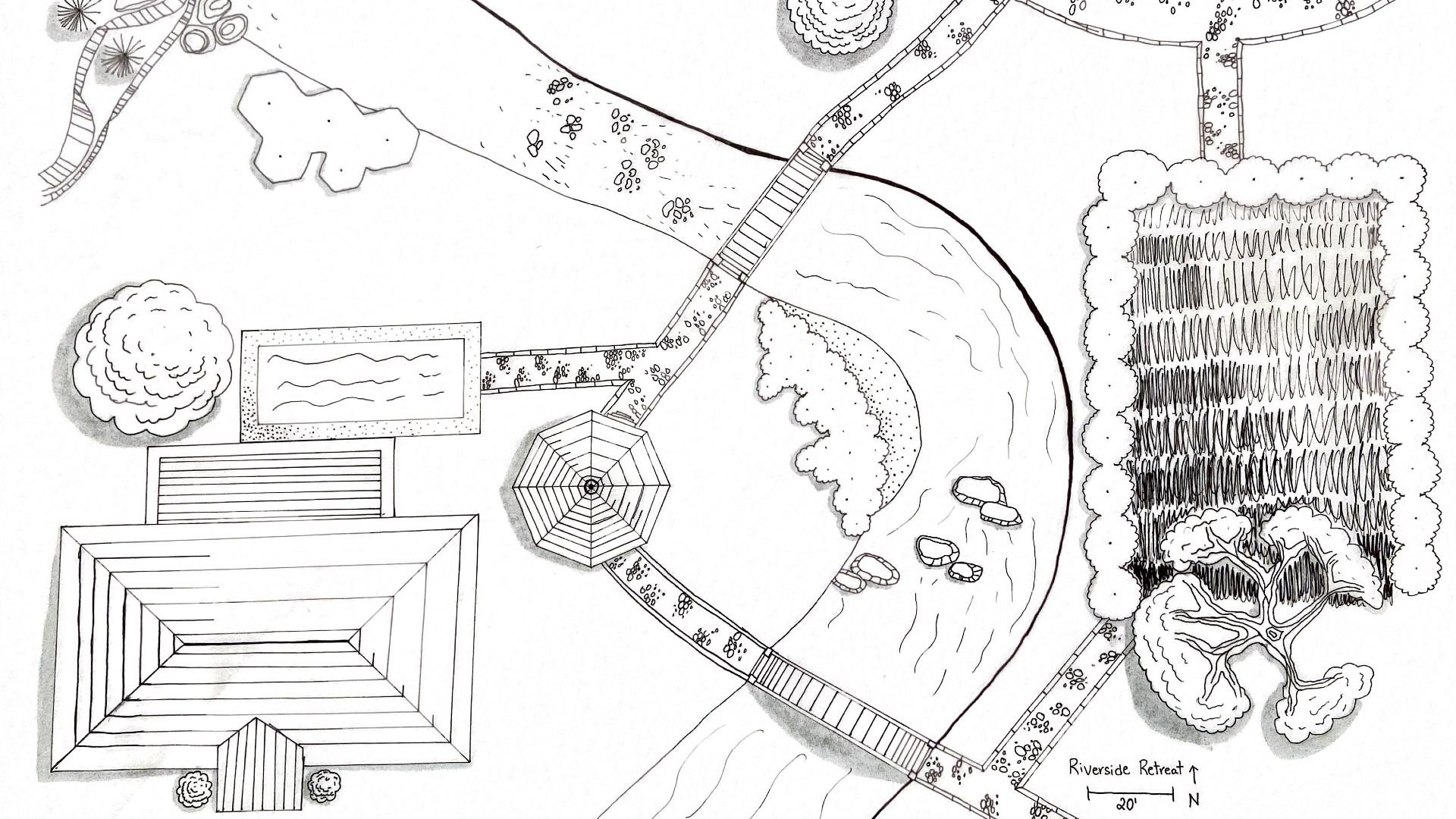Did you know that most Maryland residents live within a 15 minute walk of a water source that eventually reaches the Chesapeake Bay? The actions we take in our yards and gardens affect the natural world beyond our property lines. A sustainable landscape’s design, construction, and maintenance meet the needs of the present without compromising the ability of future generations to meet their needs for clean water, air, and other natural resources.
Start with what you have. Inventory existing features. Note what you want to keep and what you want to change.
How to design a sustainable landscape
Make a landscape plan
Whether you are starting with a clean slate or renovating your landscape, always have a plan. Are you a DIY type or will you hire a professional design/build firm? Always do your research. Determine your goals but make sure they are realistic and attainable before digging up the first shovel of soil!
Do a site analysis
- Inventory property features: existing planting areas, septic system, shed, a visual eyesore, etc.
- Start by making a copy of your plat plan.
- Overlay with tracing paper. Use a pencil to circle and label general areas to address. Remember to allow for pedestrian and vehicular traffic and access to utilities.
- Note compass direction to establish sun, shade, and wind direction.
- Label any features added since the plat plan was created such as a deck, patio, pool, etc.
- Locate and label existing landscaping. Indicate items to keep such as trees, label items to remove.
- Identify problem areas, such as invasive plants.
- Locate and label utilities. Call Miss Utility at 800-257-7777 or missutility.net (link is external)
- Note significant slope, soggy areas, hot dry areas
Set your landscaping objectives
Ask yourself these questions to help determine your design goals:
- Do you want to create an outdoor setting that extends your living space?
- Do you want to direct visual, pedestrian, and/or vehicular traffic?
- Do you want to create a variety of areas for activities such as casual entertaining, children’s sports, growing fruits and vegetables, or ornamental gardening?
- Do you have problem areas that need to be addressed?
- Do you enjoy looking at beautiful surroundings but don’t have time or desire to do the work yourself?
- Do you want to use plant material to increase your energy efficiency?
- Do you just want to give your landscape an update for reduced maintenance?
Implement your landscape design in phases
Count on phasing in the plan over time.
- Develop a strategy with priorities that includes maintenance.
- Create new features and address problem areas with eco-friendly practices.
- Use plants native to your region and conditions Recommended Native Plants of Maryland
- Install a rain garden to control runoff and address soggy areas Rain Garden app Video: Install a Rain Garden
- Identify and remove non-native invasive plants.
- Determine if a landscape feature functions properly and make adjustments before moving to the next project.
- The best sustainable design mimics nature. Work with the natural features of the property.
- Minimize construction that alters natural slope, water flow, and soil quality.
